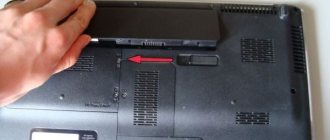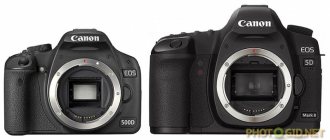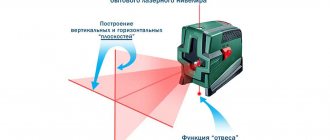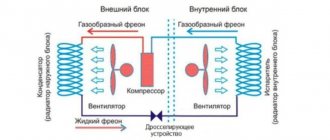Studying, working and traveling at the same time is the life of a modern person. If previously every home had a stationary PC, now laptops have replaced them everywhere due to their compactness. The new format of the personal computer has also changed over time, becoming more productive, lightweight and stylish. With the advent of the MacBook Air model range on the market, a new era began - ultrabooks. What is their difference from laptops and what causes the popularity of mobile laptops?
Advantages of the laptop:
- Large display. This type of device has a diagonal of 15-17 inches, which is convenient for watching videos, as well as working for many hours (including with graphics).
- High processor performance and frequency. With the same hardware parameters, the laptop will be more efficient and will do the job much better than its mobile counterpart.
- Possibility to replace battery and other parts for repair and improvement. If a laptop can be taken taking into account further changes (replace the RAM, battery, video card), then an ultrabook is a complete model.
- There is a separate video card on gaming and graphics models.
- Availability of a disk drive and at least 4 USB ports.
- You can change the amount of data storage.
Dimensions
The most obvious difference between a laptop and an ultrabook is size, which is what really matters here. After all, all models of compact personal computers are called a laptop, and to be called an ultrabook you need to meet standards. To do this, a mobile PC must be no more than 14 inches diagonal, up to 2 cm thick and weigh up to 1.5 kg. Like, for example, ASUS Zenbook 3 - the device weighs less than a kilogram and has a 12.5-inch display. If you compare these dimensions with the dimensions of regular laptops, the difference is noticeable. Carrying a thin and light device in your bag every day is easy.
What is the difference between an ultrabook and a laptop - what is the main difference
Ultrabooks have quite a lot of differences from standard laptop computers, although it seems that they are similar in appearance. Ultrabooks have a number of significant features:
- Small dimensions, small thickness and minimal weight.
- Small amount of RAM and weaker technical characteristics.
- Built-in battery with sufficient power.
- All hardware components are built-in.
- Use SSD or hybrid drive.
- Higher price.
- Design, combination with various functionality - for example, touch screen.
Manufacturers focus on dimensions and design when producing ultrabooks, to the detriment of performance. But when traveling and during various business meetings, these devices have no equal. All differences are compensated by the price - if you can buy an ultrabook with powerful characteristics, then it will have no disadvantages over a laptop.
Dimensions
An ultrabook is thinner than a netbook and laptop
The main feature of ultrabooks is the dimensions of this computer. Regardless of the manufacturer, the thickness of these devices is small - 15 mm.
For a laptop, in turn, it cannot exceed 25 mm.
Attention! The standard diagonal of ultrabooks is a screen up to 14 inches (in rare cases 17-19).
Weight
Thanks to their small size and less impressive hardware, ultrabooks are several times lighter than laptops - up to 1.5 kg. Many people decide to choose this ultra-light device precisely for this characteristic - the ultrabook can easily be carried in a handbag or school bag.
Hardware filling
Due to its small dimensions, the manufacturer cannot install a functional cooling system inside the ultrabook, so installing a powerful processor and video card in it is impossible. But many modern models outperform inexpensive laptops and netbooks by using special chips and innovative technologies.
The personal computer must have characteristics according to the user's needs
Typically, ultrabooks have a RAM capacity of no more than 4Gb, SSD drives are more often used up to 320Gb, processors from Intel. Despite the low hardware characteristics, the filling is quite impressive - these devices use only high-quality components.
Accumulator battery
Since the ultrabook device uses modern chips and weaker video cards, processors and other components, its energy consumption is significantly lower. For this reason, the device does not require a powerful battery. Despite the low battery capacity, the operating time of these portable computers has a similar value.
Important! The main advantage and difference between a laptop and an ultrabook is its removable battery.
Price
Due to the differences, the price of these devices has different values: a laptop with similar characteristics will cost half as much as an ultrabook. This is due to the design features of a thin computer, its internal hardware structure and the cost of light and small-sized components. The high cost of an ultrabook is formed due to the following factors:
- The SSD used is more expensive than a standard laptop hard drive.
- Unlike a regular laptop computer, whose case is made of plastic, Ultrabooks are made from highly durable and lightweight aluminum, which costs more than plastic.
- It is not possible to install a standard cooling system, since it is massive and requires more space, so innovative cooling systems are installed.
- Image and style - an ultra-thin aluminum computer is more beautiful than usual, which is something that manufacturers also place special emphasis on.
But some companies set the price for their ultrabooks less than for laptops, for example, the manufacturer Intel, whose computers belong to the business category.
If we give market values, ultrabooks have a price from 15 to 200 thousand rubles, the average in stores is about 60 thousand rubles. The cheapest is Lenovo IdeaPad Flex 2 Pro (13 thousand rubles). And the most expensive is ASUS ZenBook Pro 15 UX580GD (200 thousand rubles).
Laptops have an average cost of 25,000 rubles, the minimum value is 9 thousand (Irbis Atom x5). Maximum – 400 thousand (laptops of the MSI WT75 8SM line). There are differences, but rather in the range of costs.
Weight
An ultrabook and a laptop are a bird of a feather, only in the first everything is done to minimize excess weight. The hardware of both devices is approximately the same, just made of different materials. For example, hybrid hard drives or SSDs are used as storage devices. Manufacturers simply excluded some elements because they were unnecessary to “lose weight” of the laptop - a disk drive, ports, discrete video adapters. For thinness and mobility, ultrabooks use a special rechargeable battery that is not removable.
What is the difference between a netbook and a laptop, ultrabook: comparison, differences
photos of a laptop, netbook and ultrabook for comparison
- A netbook differs from 2 other types of similar devices in overall dimensions, performance and price - they are smaller. Although modern netbook models can be expensive, if the manufacturer has invested powerful hardware into it.
- The second point of difference is the capacity of the hard drive. It is always smaller on netbooks.
- Lack of a slot for expanding the amount of RAM or the presence of only one, unlike laptops - where there are 2 of them.
- The graphics system is integrated in netbooks, which is why the screen matrix is cheap and cannot provide high resolution.
- The main purposes of a netbook are to work with office applications, on the Internet, and to solve minimally resource-intensive multimedia tasks. Its larger and more productive friends can easily implement more complex options.
Hardware
Ultrabooks, although lightweight, can also be productive and powerful. They integrate modern fifth- and even seventh-generation Intel processors, but with restrictions on energy consumption. This allows the device not to overheat during operation. Although models from well-known brands, for example, Mac, Asus or Dell, pack ultrabooks with good processors, their operating frequency is reduced. This means that when testing the speed of a laptop and its thin version, the first will win.
conclusions
- If you want to get maximum ease of use, comfortable viewing of movies and modern games, then buy a desktop computer.
- If you need a mobile computer for work, then buy a laptop with a 15.6″ screen size.
- If you need a home computer and want to watch movies on it, but space is limited, then buy a laptop with a 17.3″ screen size.
- If you need a compact computer for work or study, then buy an ultrabook or a thin and light laptop with a screen size of 13-14″.
- If you want to have a universal option that can be used mainly for entertainment and less often for typing, then you can purchase a tablet with a 10″ screen and a detachable keyboard.
- If you are on a limited budget and need a mobile computer for work or school that you will carry in your hands every day, then buy a netbook with a screen size of 11.5″.
- If you need a mobile device for reading, internet and entertainment, then buy a tablet with a 10″ screen size.
- If you need a compact mobile device that you want to carry in a small purse, then buy a tablet with a screen size of 7-8″.
- If you are a wealthy person, then the Apple tablet (iPad) will be an uncompromising option for you in terms of quality and style.
- If you want to easily share files and experiences with your friends, and like to experiment, then buy a tablet with the Android operating system.
- If you don’t want to bother with settings, have a reliable and stylish device, but are somewhat limited on funds, buy an iPad Mini with an 8″ screen size.
Read the following articles on how to choose a computer, laptop and tablet.
Lenovo Yoga Tablet 3 8 LTE Tablet Lenovo IdeaPad Miix 310-10ICR (80SG00AARK) Lenovo E31-80 laptop (80MX00WGRK)
Battery
If, when choosing a device, an ultrabook or laptop is based on battery life. And they do the right thing, because this is often the reason for buying a thin gadget. The batteries in ultrabooks are made using special technology, which makes them flexible. Therefore, they do not take up much space and do not weigh much. The operating time for such a device is longer than for laptops. For example, at the same cost, a thin personal computer will work autonomously for 5 hours, and its analogue with a diagonal of 15-17 inches will only work for 3 hours.
What is the difference between a laptop and an ultrabook?
The name ultrabook was first introduced and patented by Intel back in 2011. The company has noticed significant advances in the field of mobile computers in very thin and compact cases. In particular, it was the ideas of Steve Jobs that became the starting point for the emergence of a large number of ultrabooks.
The main difference between an ultrabook and a regular laptop is the compactness of the case . Almost all models of this type have a thickness of about 15 mm. Compared to traditional laptops with a thickness of 35 mm or more, the difference is quite noticeable.
The weight also differs significantly . If standard laptops most often weigh about 2-3 kg, then for an ultrabook the figure of 1-1.3 kg is usual. At the same time, from year to year, manufacturers are trying to offer users lighter and lighter models without losing quality and performance.
It is also worth noting the battery life indicators , which are at a higher level in ultrabooks. Mid-range laptops usually have a battery life of no more than 5 hours. Thin models are specially optimized for long-term operation away from a power source, so the battery life can reach 15 hours.
Price
The pricing policy for both versions of equipment depends on the technical parameters: the more powerful and modern, the more expensive. With the same characteristics and manufacturers, an ultrabook will cost less. When purchasing, you also need to take into account possible expenses for improving the device (improving OP, memory capacity, adapters for ports, and so on). Also, ultrabook owners need to invest in a hard drive to store heavy files without cluttering up their personal PC.
Which is better, laptop and ultrabook?
It is quite difficult to determine the best gadget, because it all depends on the technical requirements. If you need a portable gadget for work, study, that is, for standard workloads (reading, watching videos, typing and working with installed programs), then an ultra-thin laptop will do (a fairly budget HP Notebook laptop - thin, light and ideal for a student - bright example). But for gamers, designers, programmers and those who squeeze performance out of their PC, the full arsenal of this device will not be enough. It is much easier for them to spend money on a good personal computer with a large diagonal, which can also be carried with them on occasion.
If you wish, you can upgrade any equipment, but this requires time, money and knowledge. Not all models can be disassembled and some elements can be changed. Therefore, buying an ultrabook because of the cost with the hope of further transformation is a risky proposition. Then it’s better to take a low-power laptop and make the update much easier with it. New models of both devices are designed to be as productive as possible; manufacturers are trying to make the body thinner and the weight less.
Netbook, ultrabook or laptop: which is better for study, student, cheaper, what to choose, buy?
a bunch of laptops and netbooks for a student to choose for studying.
The most optimal and cost-effective option for studying would be a netbook. In addition to its low price, it has the smallest dimensions and is convenient to carry.
If you are puzzled by buying a device for an engineering student who constantly uses specific software, choose a more powerful laptop.
So, we looked at the distinctive features of a netbook from a laptop and an ultrabook. We decided on the parameters of the device for a student, for studying.
Choose the best device option and use it!











